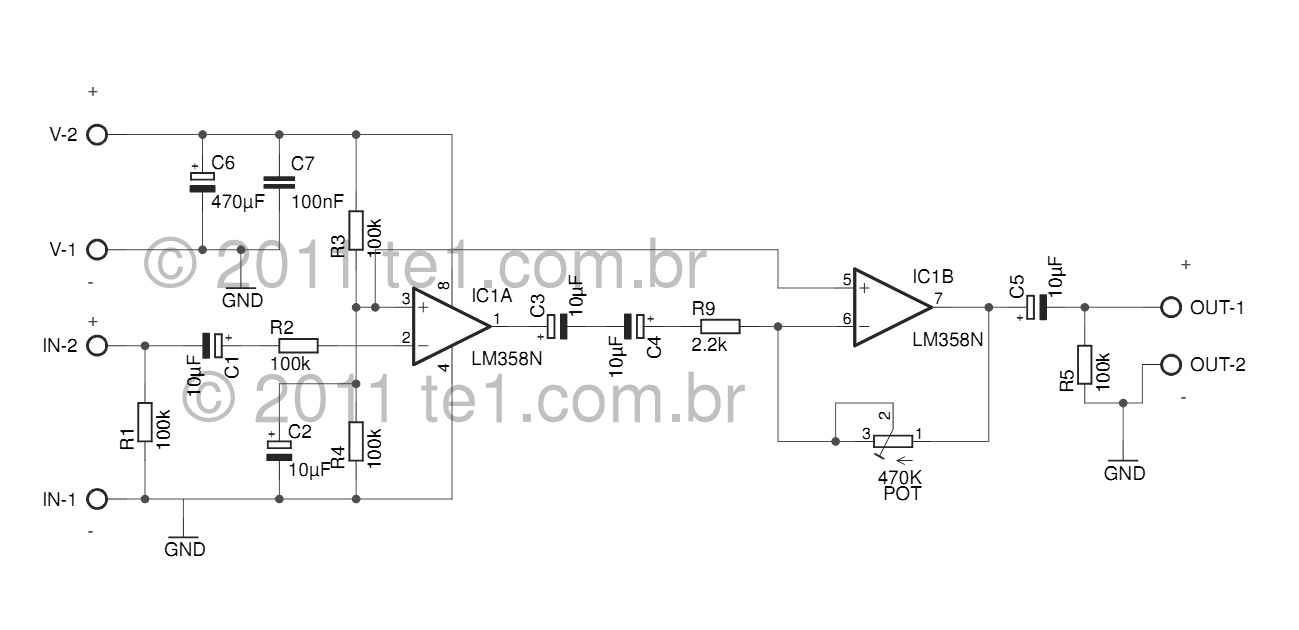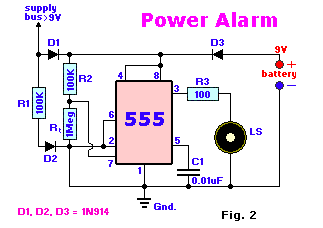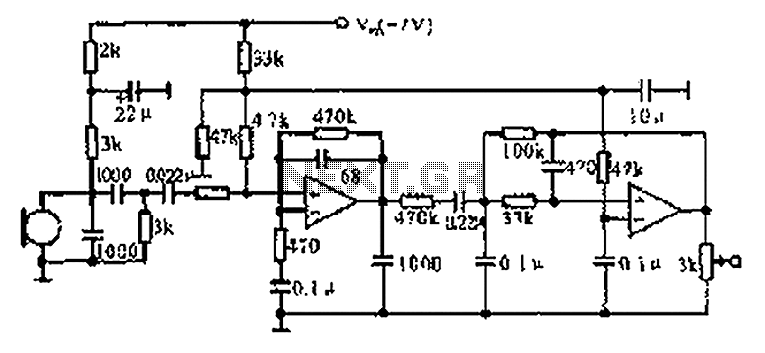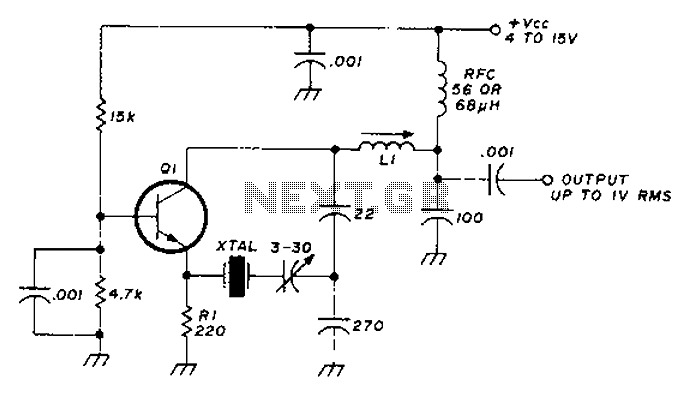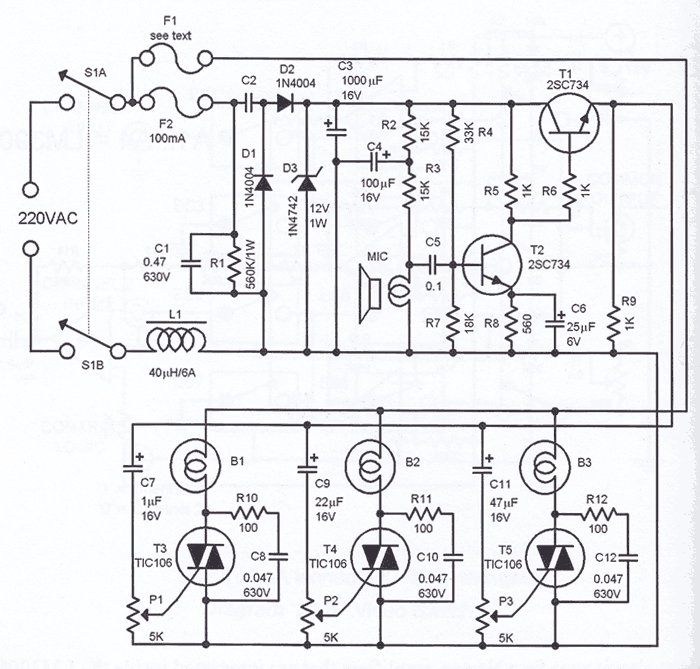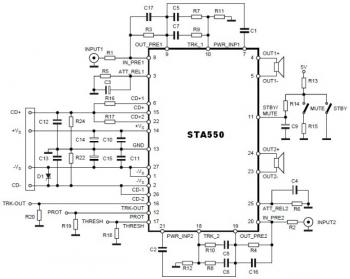
TA7366 67 five lights single drive circuit
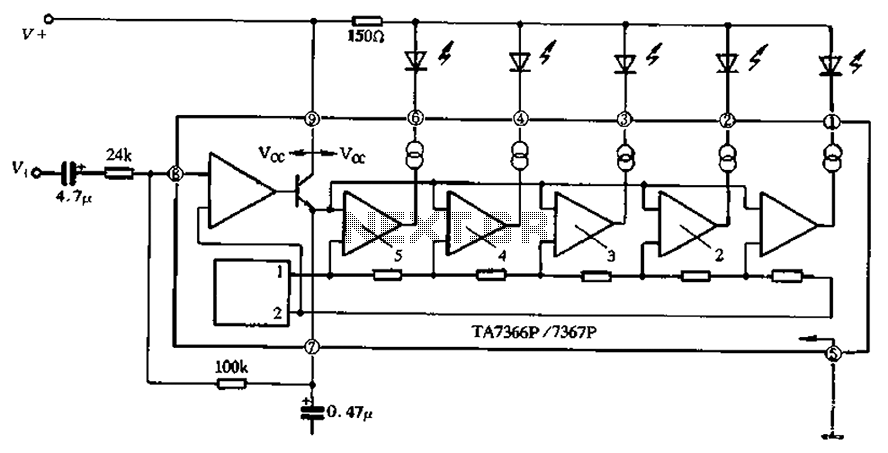
The TA 7366/7367 is a commonly used single display driver circuit manufactured by Toshiba Corporation. It features a 5 LED driver circuit and is designed in a 9-pin single in-line plastic structure. The circuit configuration includes an operational amplifier (op-amp) and a reference voltage circuit. The op-amp serves as an input amplifier to amplify the input signal to an adequate drive level. The remaining five components consist of five voltage comparator stages that compare the input signal level to the reference voltage. When the input signal exceeds the reference voltage, the comparator output goes low, activating the light-emitting diodes (LEDs). For the TA7366, the fifth LED corresponds to a zero level, with specific gain settings for each LED. The TA7367 offers different gain settings and maximum display ranges. Both circuits have parameters such as a power supply voltage range of 4 to 12V, a quiescent current of 3mA, an output current of 8mA, and a lighting sensitivity of 230mV for the fifth LED.
The TA 7366/7367 display driver circuit is designed to provide efficient LED driving capabilities for visual indicators in various electronic applications. The circuit's architecture, which incorporates a 9-pin configuration, allows for compact integration into devices where space is limited.
The operational amplifier within the circuit plays a crucial role by amplifying the input signal. This amplification is essential for ensuring that the signal reaches a level sufficient to drive the LEDs effectively. The subsequent five voltage comparator stages serve to monitor the amplified signal against a predetermined reference voltage. This functionality allows for precise control over the LED illumination based on the input signal's characteristics.
In the TA7366 variant, the display driver can manage up to five LEDs, with each LED corresponding to specific gain levels. The gain settings are tailored to provide a range of display outputs, from 0 to 16 dB, with specific intervals that enhance the visibility of the output signal. For instance, the intervals for the TA7366 are set at 3, 3.5, and 5 dB, while the TA7367 offers a more granular control with 2 dB intervals.
The power supply requirements for both circuits range from 4 to 12V, making them versatile for various power supply configurations. The quiescent current of 3mA indicates low power consumption during idle operation, which is beneficial for battery-powered applications. The output current capability of 8mA ensures that the LEDs can be driven effectively without risking damage to the components.
Overall, the TA 7366/7367 display driver circuits are well-suited for applications requiring reliable LED indication, such as audio level meters, signal strength indicators, and other visual feedback systems in consumer electronics. Their design offers a balance between performance and efficiency, making them a preferred choice among engineers and designers. Commonly used single display driver circuit TA 7366/7367 is manufactured by Toshiba Corporation 5 LED driver circuit, it adopted a 9-pin single in-line with plastic structure, within which the circuit configuration and application circuit of the circuit shown in Figure 4-48 o intron 6 op amp and a reference voltage circuit. 6 op amp as an input amplifier for amplifying the input signal to obtain sufficient drive level, and the remaining five groups consisting of five voltage comparator stage 05 and voltage comparator reference voltage ratio comparing, when the input when the signal level is greater than the reference voltage, the comparator output is low, driving the stage light emitting diode emits light.
For TA7366, its fifth light-emitting diodes k clever to zero level in turn is a 3 and b is supported, LD is a 6dB, Lm is a iicB, LDI is a 16 blood. For TA7367. LD5 is OdB, k 2 is a nosebleed, k is a 4dB, Lm is a 6dB, LD1 is a 8dB. Difference between the two drive circuits, one maximum display range: 0 to a one 16dB, one of O ~ a 8dB; the second is the level of each interval different: one interval 3,3.5, SdB, a only intervals are 2dB.
The remaining two electrical parameters, power supply voltage range V : 4 ~ 12V; quiescent current, : 3mA; output stream 8rnA; lighting sensitivity V : 230mV (fifth only lights) o
The TA 7366/7367 display driver circuit is designed to provide efficient LED driving capabilities for visual indicators in various electronic applications. The circuit's architecture, which incorporates a 9-pin configuration, allows for compact integration into devices where space is limited.
The operational amplifier within the circuit plays a crucial role by amplifying the input signal. This amplification is essential for ensuring that the signal reaches a level sufficient to drive the LEDs effectively. The subsequent five voltage comparator stages serve to monitor the amplified signal against a predetermined reference voltage. This functionality allows for precise control over the LED illumination based on the input signal's characteristics.
In the TA7366 variant, the display driver can manage up to five LEDs, with each LED corresponding to specific gain levels. The gain settings are tailored to provide a range of display outputs, from 0 to 16 dB, with specific intervals that enhance the visibility of the output signal. For instance, the intervals for the TA7366 are set at 3, 3.5, and 5 dB, while the TA7367 offers a more granular control with 2 dB intervals.
The power supply requirements for both circuits range from 4 to 12V, making them versatile for various power supply configurations. The quiescent current of 3mA indicates low power consumption during idle operation, which is beneficial for battery-powered applications. The output current capability of 8mA ensures that the LEDs can be driven effectively without risking damage to the components.
Overall, the TA 7366/7367 display driver circuits are well-suited for applications requiring reliable LED indication, such as audio level meters, signal strength indicators, and other visual feedback systems in consumer electronics. Their design offers a balance between performance and efficiency, making them a preferred choice among engineers and designers. Commonly used single display driver circuit TA 7366/7367 is manufactured by Toshiba Corporation 5 LED driver circuit, it adopted a 9-pin single in-line with plastic structure, within which the circuit configuration and application circuit of the circuit shown in Figure 4-48 o intron 6 op amp and a reference voltage circuit. 6 op amp as an input amplifier for amplifying the input signal to obtain sufficient drive level, and the remaining five groups consisting of five voltage comparator stage 05 and voltage comparator reference voltage ratio comparing, when the input when the signal level is greater than the reference voltage, the comparator output is low, driving the stage light emitting diode emits light.
For TA7366, its fifth light-emitting diodes k clever to zero level in turn is a 3 and b is supported, LD is a 6dB, Lm is a iicB, LDI is a 16 blood. For TA7367. LD5 is OdB, k 2 is a nosebleed, k is a 4dB, Lm is a 6dB, LD1 is a 8dB. Difference between the two drive circuits, one maximum display range: 0 to a one 16dB, one of O ~ a 8dB; the second is the level of each interval different: one interval 3,3.5, SdB, a only intervals are 2dB.
The remaining two electrical parameters, power supply voltage range V : 4 ~ 12V; quiescent current, : 3mA; output stream 8rnA; lighting sensitivity V : 230mV (fifth only lights) o
